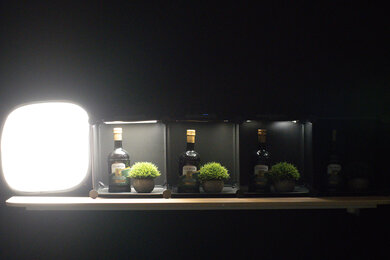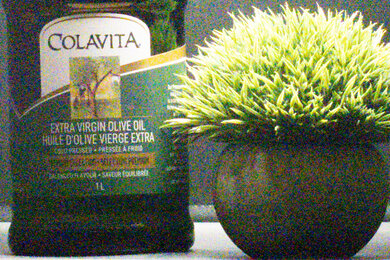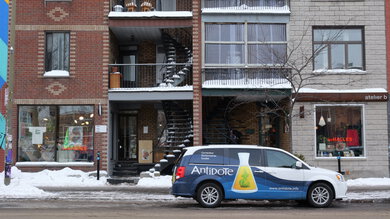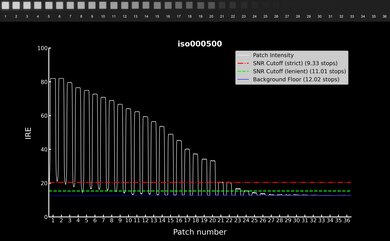The Panasonic LUMIX G9 II is a flagship Micro Four Thirds (MFT) camera and the follow-up to 2017's Panasonic LUMIX G9. It has a newly redesigned body that's more reminiscent of the Panasonic LUMIX S5 II than its predecessor, and it offers plenty of upgrades under the hood that make it a good fit for hybrid photo and video shooters. That includes a 25-megapixel dual gain sensor, a new and improved phase-detection autofocus system, and a very effective five-axis in-body image stabilization system, along with a plethora of advanced video features. That said, with comparable full-frame or even APS-C cameras hovering around the same price point—including Panasonic's own S5 II—the G9 II makes the most sense for those who are already invested in the MFT lens ecosystem or prefer the reach and portability offered by that system.
Our Verdict
The Panasonic G9 II is good for travel photography. While it isn't the most portable MFT camera, it still benefits from smaller MFT lenses, which can bring down the size of your kit. The camera also has an excellent IBIS system, which helps reduce the need for a tripod. Its autofocus is okay but can get tripped up with busier scenes or faster subjects. Battery life is good overall, but depending on your shooting habits, you might still need a portable power bank for long days on the go.
- Sturdy, weather-sealed construction.
- Excellent ergonomics.
- Great stabilization.
- Bulky for a MFT camera.
- Autofocus isn't the most reliable.
The Panasonic G9 II is great for landscape photography. It has a relatively high-resolution sensor for a Micro Four Thirds camera, capturing a good amount of fine detail, and it has an impressive amount of dynamic range, so it's fairly well-suited for high-contrast scenes. It also includes a pixel-shift mode that lets you capture very high-res images of up to 100 megapixels. On top of that, it's a sturdy weather-sealed camera with excellent ergonomics, though it isn't the most portable option, especially compared to some other MFT peers.
- Sturdy, weather-sealed construction.
- Excellent ergonomics.
- Impressive dynamic range.
- High-res pixel-shift mode.
- Bulky for a MFT camera.
The Panasonic G9 II is good for sports and wildlife photography. It can shoot at very quick speeds in burst mode, though its fastest burst rates are reserved for single-AF shooting. Still, it offers a pre-burst function to help you time your burst to the perfect moment. Its autofocus system isn't the most accurate, especially with faster subjects or busier scenes, but it's adequate for most subjects. The camera itself feels well-built, with a weather-sealed body to keep out dust and moisture, and its ergonomics are excellent. The Micro Four Thirds format also offers the benefit of more compact telephoto lenses. That said, if you fill up the photo buffer, it takes a very long time for it to empty, which can slow you down when you're in the thick of the action.
- Sturdy, weather-sealed construction.
- Excellent ergonomics.
- Quick max burst rate.
- Pre-burst mode.
- Bulky for a MFT camera.
- Burst rate drops to 10 fps (mechanical shutter) or 60 fps (e-shutter) with AF-C.
- Very long wait for buffer to empty when filled up.
The Panasonic G9 II is good for vlogging, though this isn't its main intended use. It's a very capable video camera with plenty of resolution and frame rate options for different types of vlogs. It also has a fully articulated screen to help you monitor yourself. Its autofocus also does a pretty good job of keeping faces in focus in video. That said, it isn't the most portable option for walk-and-talk style vlogs, and rolling shutter effect can be distracting with quicker camera pans.
- Sturdy, weather-sealed construction.
- Fully articulated screen.
- Great stabilization.
- Bulky for a MFT camera.
- Noticeable rolling shutter effect.
The Panasonic G9 II is amazing for studio video. It has excellent internal recording specs, with 1080p recording at up to 240 fps and 4k recording at up to 120 fps. It also supports 5.8k open gate recording at up to 30 fps, giving you more flexibility to crop into different aspect ratios. There's internal 10-bit 4:2:2 capture and V-Log recording for more flexible color grading, and it has great dynamic range overall. The camera can also record 4k ProRes 422 and ProRes 422 HQ formats to an external SSD, with internal ProRes support in 1080p. That said, it can overheat with prolonged recording sessions at higher resolutions.
- Internal 10-bit 4:2:2 recording.
- Open gate 5.8k.
- 4k up to 120p.
- Apple ProRes support.
- Can overheat in more strenuous shooting conditions.
- Need an SSD to take advantage of ProRes formats in 4k.
- Noticeable rolling shutter effect.
The Panasonic G9 II isn't meant for POV-style action video, but it's well-suited to recording action from the sidelines. It can capture 4k at up to 60 fps and 1080p at up to 240 fps, with a dedicated slow-motion mode that records 1080p at up to 300 fps. It also has an excellent stabilization system for smoother camera movements. That said, it isn't the most portable camera and isn't designed to be used with action video mounts.
- Sturdy, weather-sealed construction.
- Great stabilization.
- High frame rate options.
- Bulky for a MFT camera.
- Not designed for action video rigs.
- Not waterproof.
- Noticeable rolling shutter effect.
The Panasonic G9 II has good RAW image quality. It has impressive dynamic range to bring out a broad range of detail in high-contrast scenes. Its relatively high-resolution sensor also captures images with a good level of fine detail when punching in. It also has a high-resolution mode that captures composite images of up to 100 megapixels. That said, it isn't the best choice for low light situations, with noise handling that's just okay, though noise can be mitigated by shooting with a wider aperture or slower shutter speed.
- Impressive dynamic range.
- High-res pixel-shift mode.
- Noise handling is just okay.
Performance Usages
Changelog
-
Updated Dec 12, 2024:
We wrote text for the new tests added in Test Bench 0.13 and updated the Verdict section accordingly.
- Updated Dec 12, 2024: We've converted this review to Test Bench 0.13. We've added new tests for Video Dynamic Range and Luminosity Patch Detection. You can learn more about these updates in the changelog.
- Updated Oct 02, 2024: We added a comparison to the Panasonic LUMIX GH7 in the Video Features box.
- Updated Jan 29, 2024: Added text to the 'Raw Photo Performance' verdict box. We also completely re-ran the 'Photo RAW Noise' test after noticing that the exposure was off in the original files we used for this test; the score has been updated accordingly.
Check Price
Differences Between Sizes And Variants
The Panasonic LUMIX G9 II comes in one color variant, Black.
You can buy the camera body on its own or in a bundle with a lens like the Panasonic Leica DG Vario-Elmarit 12-35mm f/2.8 ASPH. POWER O.I.S. lens or the Panasonic Leica DG Vario-Elmarit 12-60mm f/2.8-4 ASPH. POWER O.I.S. lens, depending on the retailer. We purchased the camera bundled with the 12-35mm f/2.8 lens, and you can see our unit's label here.
Let us know if you come across a different variant, and we'll update our review.
Popular Camera Comparisons
The Panasonic G9 II is Panasonic's most advanced Micro Four Thirds camera to date and a worthy follow-up to the original Panasonic LUMIX G9. It's the first Four Thirds camera in the manufacturer's lineup to feature phase-detection autofocus, previously seen in the full-frame Panasonic LUMIX S5 II, offering the brand's best AF yet. It still leaves much to be desired compared to the AF systems found on leading cameras like the Sony α7C II or the Canon EOS R6 Mark II. The camera isn't as portable as an MFT rival like the OM SYSTEM OM-1, but it offers significantly better video specs and faster burst shooting, making it a compelling choice for anyone invested in the Micro Four Thirds system.
If you're looking for more options, check out the best cameras for wildlife photography, the best cameras for hiking and backpacking, and the best mirrorless cameras.
The Panasonic LUMIX G9 II and the Panasonic LUMIX GH7 are both fantastic Micro Four Thirds cameras, with different intended users. The G9 II is a great hybrid camera, with some pretty advanced video features, but it's the better option for photography, with a slightly more portable body and simpler feature set. The GH7 is the better videography camera, with more advanced internal recording options like internal RAW recording and video-oriented design features, like a CFexpress card slot and a built-in fan to prevent overheating during longer recording sessions.
The Panasonic LUMIX G9 II and the OM SYSTEM OM-1 Mark II are both excellent flagship Micro Four Thirds cameras. The LUMIX offers a bit more value for its price, especially for hybrid shooters, with better video features than the OM-1 Mark II. That said, the OM-1 Mark II has a few advantages for wildlife photography, with a more portable body, more robust weather-sealing, and a stacked sensor that allows for faster burst speeds and less rolling shutter distortion.
The Panasonic LUMIX G9 II and the OM SYSTEM OM-1 are both high-end Micro Four Thirds cameras. The OM SYSTEM is a bit more portable, with a higher-resolution EVF and a longer battery life. It also uses a stacked sensor, resulting in less rolling shutter effect. On the other hand, the Panasonic has a higher-resolution sensor and offers better video specs, making it better suited for hybrid and video shooters.
The Panasonic LUMIX G9 II is better overall than the Panasonic LUMIX GH5 II. It has a higher-resolution sensor and newer processor, with faster burst shooting and a more reliable phase-detection autofocus system, making it more well-rounded. Also, while it's marketed as a stills-oriented camera, its video specs are on par with, and in some ways even surpass, the more video-oriented GH5 II.
Test Results

The Panasonic G9II isn't especially portable for a Micro Four Thirds camera. It's similar in size to the full-frame Panasonic LUMIX S5 II, although it's a bit lighter due mostly to its smaller sensor. Though it's a relatively large body, it's well-suited to larger telephoto lenses and is similar in size and weight to its predecessor.
The camera feels remarkably well-built. The body is made of plastic and magnesium alloy, and it's weather-sealed to keep out dust and moisture. Panasonic also notes that it can be operated in temperatures down to −10°C (14°F). The buttons and dials feel sturdy and tactile, and the battery compartment and SD card compartment are both covered with locking hinged doors that feel secure. Like the S5 II, the shoulder strap attachments are fixed, so they won't rattle around when shooting video. However, unlike that model, there are no heat vents around the viewfinder, suggesting that the G9 II is intended as a stills-first camera.
- Panasonic LUMIX DC-G9 II camera body (not pictured)
- Sensor cap
- Panasonic Leica DG Vario-Elmarit 12-35mm f/2.8 ASPH Power OIS lens
- Lens cap
- Rear lens cover
- Lens hood
- Soft pouch for lens
- Hot shoe cover
- Battery grip connector cover
- 1x Panasonic DMW-BLK22 battery
- AC adapter
- USB-C to USB-A cable
- Shoulder strap
- User manual and documentation
The Panasonic G9II has excellent ergonomics. Though it has slightly different dimensions, its design is nearly identical to the Panasonic LUMIX S5 II, with extensive, well-spaced physical controls that make it easy to adjust your settings. The dedicated ISO, white balance, and exposure compensation buttons near the shutter are also nice to have and really give you full control over the most important settings without having to dive into the menus. The hand grip is also large enough for most hand sizes and has a rubbery finish that provides a secure grip. Overall, the handling and ergonomic design feel very well thought-out, and there are a wide range of customization options to tailor the controls to your preferences.
The electronic viewfinder (EVF) is nice and large, with a high-res 3.68 million dot display, giving you a crisp image when shooting through the viewfinder. The eyecup is also soft and comfortable.
The camera has a fully articulated display with full-touch navigation. You can use it to scroll the menu, activate the shutter, select focus points, and even adjust the size of the focus area or move around the manual focus preview box. The screen gets bright enough to overcome glare in sunny conditions and has a very high resolution, giving you a crisp image when shooting in Live View or reviewing images.
The menu system is fantastic. Settings are clearly organized and labeled, making finding what you're looking for easy. You can also create a custom menu for all of your most-used settings, and there are plenty of customization options. Some nice quality-of-life touches make it easier to navigate. For example, when selecting from the many resolution and frame rate options, you can filter the settings by resolution, frame rate, or codec to more easily find the settings you need. That said, more advanced settings, like HDMI output settings, can be a bit hard to find, and the quick menu is somewhat limited, although you can still customize it to your preferences.
The G9 II uses a new 25 MP Micro Four Thirds sensor, which offers more resolution than the 20 MP sensor of the original Panasonic LUMIX G9. Panasonic also advertises a new processing engine developed with Leica as part of their L² Technology agreement. The new sensor has a dual output gain design that allows it to capture 16-bit RAW files.
The camera also has a 'High Resolution' photo mode, which shifts the sensor around in increments for a series of frames and then combines those frames in-camera into a composite image with a resolution of up to 100 megapixels, depending on your quality and aspect ratio settings. The standard 'High Resolution' setting is meant to be used with a tripod, but there's also a 'Handheld High Resolution' mode. You can see a sample of the 'High Resolution' (tripod) mode here (RAW file download), compared to a regular image of the same scene here (RAW file download). Likewise, you can see a 'Handheld High Resolution' image here (RAW file download), compared to a regular image here (RAW file download).
The camera has great battery performance overall. It's CIPA-rated for approximately 390 shots on a full charge, though the rating also varies depending on the lens. With the Lumix G 12-60mm f/3.5-5.6, the camera's rated for 390 shots, but with the Lumix G 12-60mm f/2.8-4.0, it's rated for 370 shots. In any case, CIPA ratings should be taken with a grain of salt. Your real-world battery performance will vary depending on how your shooting habits and settings. Though it isn't the highest CIPA rating for its class, it's still respectable, so you can expect to go a reasonable length of time before having to recharge the battery.
In video mode, the camera performs very well, capturing over two hours of continuous 4k video before running out of battery, with 'Recording Max Temperature' set to 'High'. In 'High', the camera doesn't stop recording even if the temperature rises. When set to 'Standard', we recorded a battery life closer to 100 minutes, with two overheating interruptions. If you need to extend the battery life further, the camera supports external power supply via USB-C with a PD charger or power source.
The Panasonic G9II can shoot at a very quick 14 fps max burst rate with its mechanical shutter, although you'll only get speeds that fast in single autofocus (AF-S) mode. If you want to use continuous autofocus (AF-C), the burst rate maxes out at 10 fps, which is still respectable but nothing extraordinary. When using the electronic shutter, on the other hand, the camera can shoot up to a whopping 75 fps with AF-S or 60 fps with AF-C. That being said, you're more likely to experience rolling shutter artifacts with the e-shutter, so it's less suited to tracking moving subjects. In addition, the camera has a useful 'Pre-Burst' function that lets you capture frames for 0.5, 1, or 1.5 seconds before you fully press down the shutter to start burst shooting. This is helpful when you're anticipating a subject's movement—for example, a bird about to take flight—to ensure you don't miss the critical moment.
While the camera doesn't have the largest JPEG buffer size compared to some of its peers, it does have a fairly large buffer overall. However, if you manage to fill it up, it takes a long time for the buffer to clear, slowing you down.
Note: This camera behaves a bit unusually when it comes to emptying its buffer. We noticed that empty times were quite inconsistent when shooting RAW files, and after investigating further, we noticed a pattern. After an initial burst, the buffer fills up after about 170 frames and it takes about 55 seconds before you can start shooting again, but on the second burst, the buffer fills up after about 120 frames and takes about 80 seconds to empty. The pattern repeats for subsequent bursts. This indicates that after filling up the first time, the camera will let you shoot before the buffer is fully empty but will empty the buffer completely on every second burst. Given this behavior, we've used an average of the buffer empty times to get the figure noted in the results above. If you fill up the buffer with JPEG files, on the other hand, it more consistently takes about 30 seconds for the buffer to empty.
This is the first LUMIX G camera to feature a hybrid phase-detection autofocus system, following in the footsteps of the full-frame Panasonic LUMIX S5 II. The Panasonic G9 II has dedicated subject detection modes for Humans, Animals, Cars, and Motorcycles, with the option to focus on either bodies or faces/eyes when using the former two detection modes. Overall, the autofocus tracking performs fairly well. It's even a little more reliable than its full-frame stablemate and competitors like the OM SYSTEM OM-1. While it won't nail focus every time and can fall behind with fast-moving subjects, it's a notable step up in performance from older Panasonic cameras.
When using center point AF without tracking, the Panasonic G9 II does an excellent job of quickly and accurately adjusting focus. If you can keep your subject under the focus point, you'll likely have plenty of keepers.
The Panasonic G9 II has a five-axis in-body image stabilization (IBIS) that's advertised to offer up to 8 stops of compensation, according to CIPA standards. The 'Dual I.S. 2' system combines in-body stabilization with optical stabilization from Dual I.S.-compatible Panasonic lenses. Overall, the camera does a great job of stabilizing shots taken at very slow shutter speeds. That said, stabilization performance can vary depending on your lens, focal length, and even the steadiness of your hands. We tested image stabilization using the Leica DG Vario-Elmarit 12-35mm f/2.8 lens, which also includes optical stabilization.
The Panasonic G9 II has impressive usable dynamic range, particularly for an MFT camera. While it can't capture as wide a range of detail as full-frame models like the Panasonic LUMIX S5 II, it still captures high-contrast scenes with good detail preservation.
The camera is good at resolving fine detail. While there isn't as much leeway to crop in as cameras with higher-resolution sensors, images still appear quite sharp. You can also use the 'High Resolution' drive mode to capture composite images with an even greater level of detail.
The Panasonic G9 II has okay noise handling. With bright lighting or settings that allow adequate light to hit the sensor, you're unlikely to see much noise, but otherwise, the camera's only decent at managing noise levels in low light.
Though it's billed as a still-first camera, the Panasonic G9II is no slouch when it comes to video features, matching up in many ways to the more video-oriented Panasonic LUMIX GH6. In addition to 4k (16:9) capture, the camera can record in C4k (17:9), 4.4k (4:3), 5.7k (17:9), and open gate 5.8k (4:3), which is great if you want more flexibility to crop into different aspect ratios. You can see sample test scene extracts for each of these below:
There's also a wide range of 'Photo Style' picture profiles to choose from, including V-Log to capture a wider dynamic and tonal range for those who prefer to color grade their own footage. You can even apply these profiles to JPEG images in photo mode. That includes the new Leica Monochrome profile (sample snapshots here and here).
The 'View Assist' feature is available for both V-Log and HLG formats and lets you simulate what your footage will look like after processing with any LUTs saved to the camera. You can even import up to 10 custom LUTs to preview or apply in-camera. Unlike most other brands, Panasonic includes a vectorscope tool in addition to waveform to help you monitor exposure levels in video. On top of that, connecting an external SSD lets you shoot with Apple ProRes 422 or ProRes 422 HQ codecs to get higher bit rates. On Dec 20, 2023, Panasonic also released firmware Ver.2.0, which adds 12-bit RAW video output, in either Apple ProRes RAW or Blackmagic RAW, to a compatible Atomos or Blackmagic external recorder via HDMI. That's a pretty impressive suite of video features for a "photo-first" camera. All that said, it's still missing some more advanced features found on the Panasonic LUMIX GH7, like internal RAW video recording and the option to add ARRI LogC3 support.
Although the camera can only record ProRes formats in 4k to an external SSD, it does support ProRes internally when shooting in 1080p. Note also that All-Intra compression is only available when using MOV format.
The camera can record at up to 120 fps in 4k without a crop, making it well-suited to capturing high-speed action or generating slow-motion footage.
The Panasonic G9 II has fantastic internal recording capabilities. It supports 10-bit internal recording, though 4:2:2 chroma sampling is only available when using MOV or ProRes formats. The camera can capture very high bit rates when using the highest quality settings; the max bit rate noted above was recorded in 4k 60p in MOV format, with 10-bit 4:2:2 color, All-I compression, and LPCM. In MP4, you'll get more manageable bit rates. If you want even higher bit rates, you'll have to use an external SSD, which allows you to use ProRes codecs for less compressed video files in C4k and 5.7k.
Additionally, there's no recording time limit, and the camera doesn't overheat too easily, though it can still overheat in more strenuous conditions. When 'Recording Max Temperature' is set to 'High', it raises the temperature threshold at which the camera stops recording, which is how we managed to get the zero recording interruptions noted above; however, the camera still gets hot and, in hotter conditions, it may still shutdown. When set to 'Standard', the camera shut down twice throughout its battery life. Unlike the Panasonic LUMIX S5 II or the Panasonic LUMIX GH6, it doesn't have heat dissipation vents to help reduce overheating.
The camera's AF system does an excellent overall job in 4k video mode. While it isn't totally seamless, it stays with moving subjects very well, even as they move around the frame. It's quick to shift focus on moving objects, though again, the transitions aren't as seamless as the leading AF systems seen on a camera like the Sony α7C II, for example.
The Panasonic G9II records excellent 4k video quality, especially when shooting in more controlled lighting conditions. It does great in low light as well, but noise handling is more limited.
Besides regular IBIS, the camera also includes an 'E-Stabilization' setting in video mode, combining IBIS, OIS, and electronic stabilization. You can set it to either 'Standard', which incurs a 1.09x crop, or 'High' for even greater camera shake compensation, which incurs a 1.26x crop. While it can help give you a bit of added stability, the e-stabilization is also prone to warping at the edges of the frame, which can be distracting. There's also a 'Boost I.S.' setting, which, according to Panasonic, boosts the effectiveness of the camera's IBIS for "when you want to perform recording from a fixed perspective." This is most useful for getting tripod-like stability when shooting a stationary handheld shot but isn't meant to be used when panning or moving the camera. Finally, there's an 'Anamorphic' stabilization setting for anamorphic lenses. You can see a comparison of the different video stabilization modes here.
There's some fairly noticeable rolling shutter effect when panning the camera from side to side, indicating that the sensor readout speed isn't the fastest. It's most noticeable with quicker camera movements, but it can still distract in scenes with a lot of vertical lines present in the background or when tracking moving subjects horizontally.
The Panasonic G9II can record at up to 240 fps in 1080p without a crop and in its standard recording mode, which is excellent. Many competitors can only manage such high frame rates in dedicated slow-motion modes without audio, but this gives you more flexibility to slow your footage down however you need to. In addition, you can record 1080p at up to 300 fps in the dedicated 'Slow & Quick' mode, with various playback speed options.
Internal recording specs are just as excellent in 1080p. The camera can record 10-bit 4:2:2 internally in MOV and ProRes formats, with very high bit rates using the highest quality settings. The max bit rate noted above was recorded in 1080p at 60 fps in Apple ProRes 422 HQ format. If you use MOV, you'll get bit rates closer to 200 Mbps, while MP4 will nab you around 30 Mbps.
The autofocus does a fantastic job in 1080p, particularly when tracking moving human faces. It's quite smooth and accurate overall. When manually selecting a subject to track, like an object, it still does an impressive job, but transitions aren't always seamless.
As with 4k, there's noticeable skewing from the rolling shutter in 1080p.
The camera's video dynamic range is great overall. It doesn't have the widest range above the background floor, especially compared to some full-frame models like the Panasonic LUMIX S5, so you'll have less leeway to recover details from the shadows. That said, its usable dynamic range is great, with about 11 stops of detail visible when allowing for a moderate level of noise.
Tested settings:
- Resolution: 4k
- Frame Rate: 30 fps
- Log Format: V-Log
Most of the camera's dynamic range is distributed below middle gray, though it doesn't have the best latitude in either direction. The dynamic range stays fairly consistent across its ISO range.
Tested settings:
- Resolution: 4k
- Frame Rate: 30 fps
- Log Format: V-Log
The Panasonic G9II has dual SD card slots, both rated for faster UHS-II cards, which is great for those who like to have backup storage on the go or prefer to keep RAW and JPEG files separate. The slots are easily accessible on the side of the camera.






















